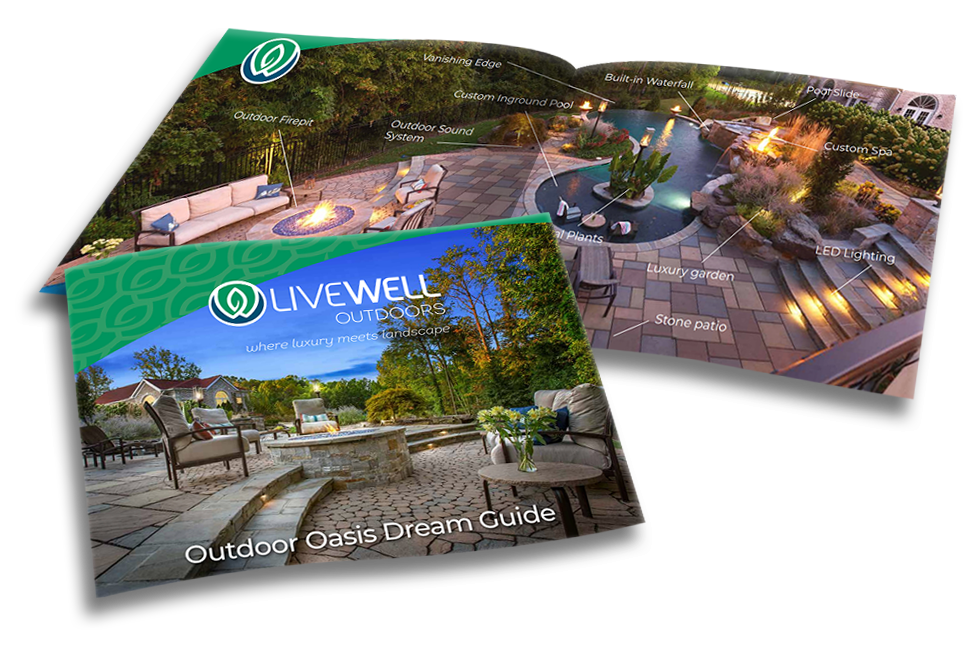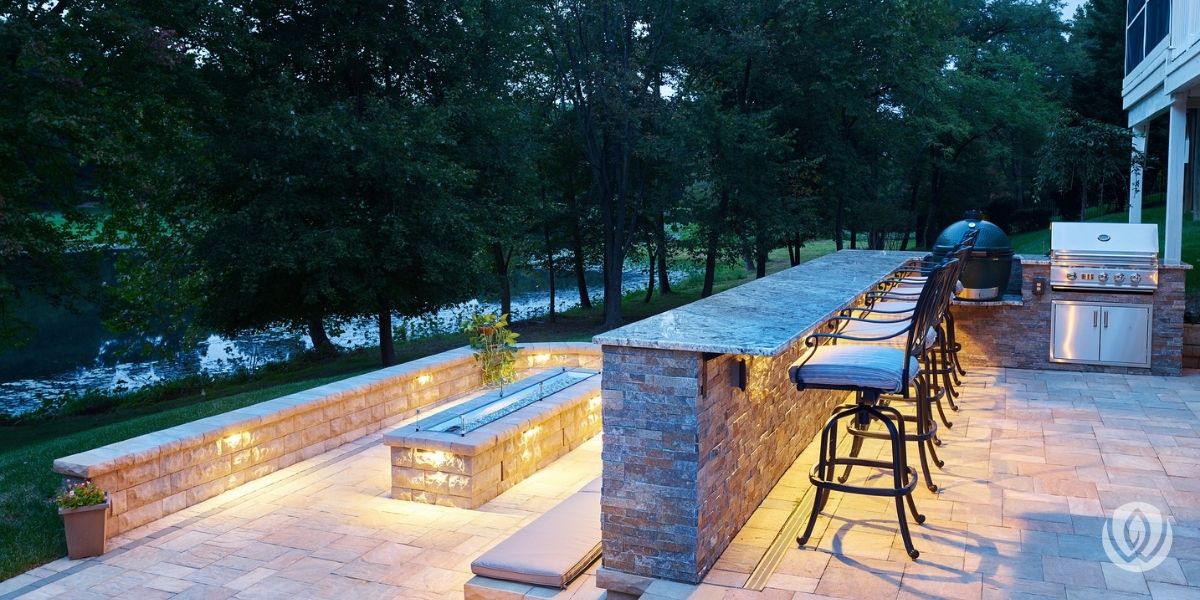
Designing an outdoor kitchen is one of the best ways to expand your living space, boost your home’s value, and get more use out of your backyard. And at the heart of any great setup? The grill.
Whether you’re planning a compact outdoor grill station or a full outdoor BBQ island with countertops and a pergola, the grill you choose will shape your entire outdoor cooking experience. It’s where meals happen, guests gather, and memories are made.
In this guide, we’ll explore the most popular types of built-in outdoor kitchen grills along with key features, sizing advice, and layout tips to help you make the best decision for your space and cooking style.
The type of grill you install in your outdoor kitchen can shape everything from the way you cook to how functional and enjoyable your space feels. Whether you value speed, flavor, simplicity, or control, each grill type offers its unique advantages. Below is a breakdown of gas, charcoal, pellet, and electric grills to help you find the right fit for your outdoor kitchen.
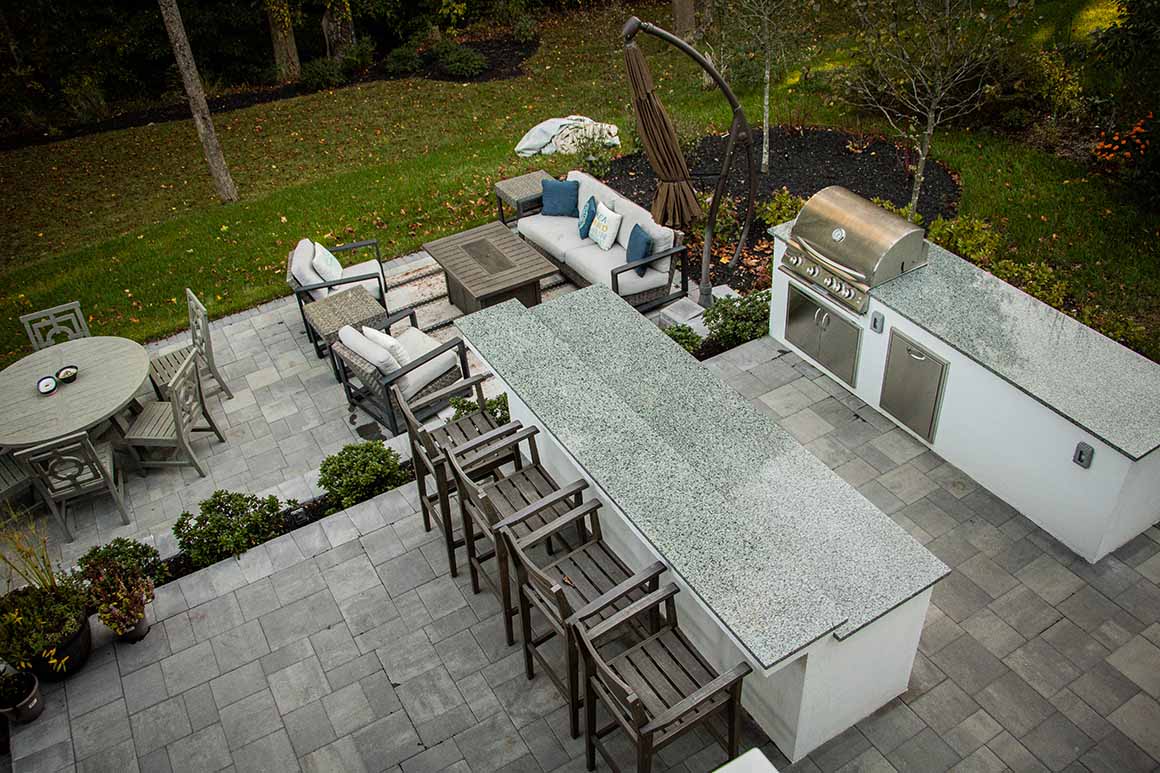
Gas grills are a favorite for many homeowners building a permanent outdoor kitchen. Whether connected to a natural gas line or powered by a propane tank, gas grills are known for quick heat-up times and reliable performance.
Best for: Frequent grilling, fast meals, family-friendly use
Gas Grill Pros:
Gas Grill Cons:
Gas grills are a dependable, user-friendly option and one of the best long-term investments for backyard kitchens.
Charcoal grills are all about experience. They deliver that unmistakable smoky flavor and give you full control over heat and placement. They take a little more work but are well worth it for grillers who enjoy the process as much as the results.
Best for: Flavor enthusiasts, traditionalists, slow grilling
Charcoal Grill Pros:
Charcoal Grill Cons:
If you're looking for big flavor and don’t mind tending to the fire, a charcoal grill can be a rewarding addition to your outdoor cooking setup.
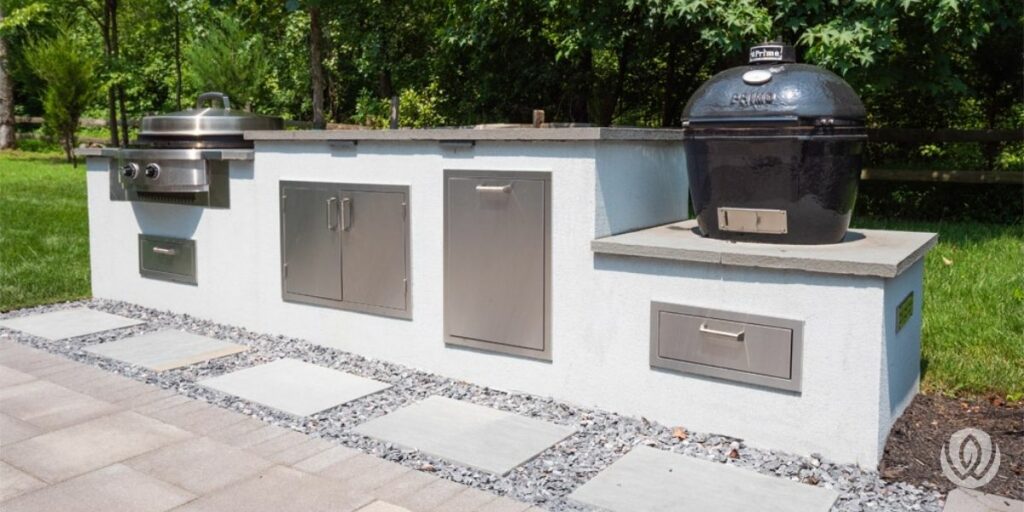
Electric grills offer simplicity and safety, making them an easy option for homeowners who want outdoor cooking without flames or fuel. While they don’t provide smoky flavor, they’re efficient, compact, and easy to clean.
Best for: Simple, no-fuss outdoor cooking
Electric Grill Pros:
Electric Grill Cons:
Electric grills are best for those who prioritize ease and convenience over bold BBQ flavor.
Pellet grills are a great blend of traditional wood-fired cooking and modern technology. Using compressed wood pellets and digital temperature control, they let you slow-cook with precision and deliver consistent, smoky flavor.
Best for: BBQ enthusiasts, low-and-slow cooking, multitasking
Pellet Grill Pros:
Pellet Grill Cons:
For those who love to experiment with smoking meats, roasting poultry, or cooking all day, pellet grills offer unmatched control and versatility.
Choosing the right size grill for your outdoor kitchen is just as important as choosing the right type. A grill that’s too small can limit your cooking, while one that’s too large might take up valuable space and waste fuel.
To choose the right grill size for your outdoor kitchen, think about your backyard cooking habits—how often you grill, how many people you cook for, and the level of versatility you need.
If you cook several times a week, look for a durable, high-capacity model. For occasional use, a compact, low-maintenance grill may be more practical.
Larger grills consume more fuel—whether gas, charcoal, or pellets. If you mainly cook for smaller groups, a medium-size grill saves energy and space. Want to cook different foods at once? Look for dual-zone or combo setups (like gas + charcoal).
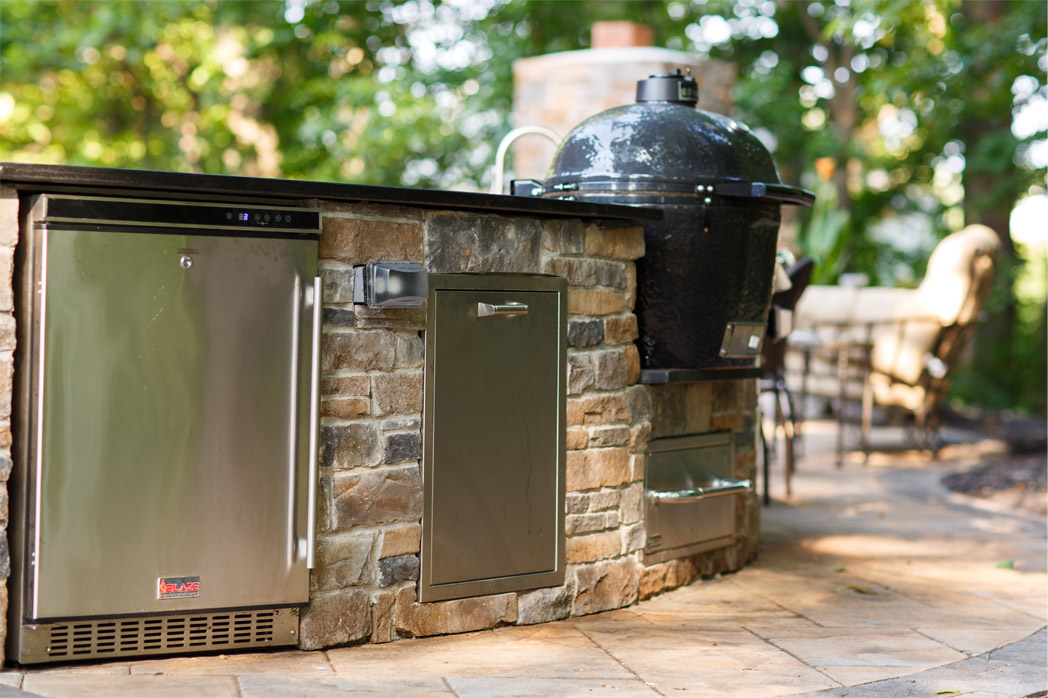
Grills come with a wide variety of features. Some are crucial for performance and safety, while others simply add convenience. Knowing the difference helps you make smarter choices.
These are the core elements that enhance functionality and improve your overall cooking experience:
These can improve convenience or add flexibility, but aren’t necessary for every setup:
Focus on the features that match how you like to cook. A well-built grill with the right essentials will often perform better—and last longer—than one loaded with extras you rarely use.
Over the years of designing and building custom outdoor kitchens, we’ve worked with a wide range of grill brands—and a few consistently stand out. The recommendations below are based on what we’ve seen perform well in real backyard setups: grills that hold up over time, offer dependable performance, and suit a variety of cooking styles.
Blaze offers a wide range of built-in gas grills that are popular in custom outdoor kitchen designs. They’re well-known for their sturdy stainless steel construction, consistent heat output, and overall reliability—especially for homeowners who grill regularly and want a long-term setup.
If you’re interested in flat-top grilling, Evo is a standout. Their circular cooktops are ideal for interactive cooking, searing, and preparing multiple ingredients at once. It’s a different experience from traditional grates but one that works especially well in modern or multi-functional outdoor kitchens.
A favorite among charcoal and kamado grill fans, Big Green Egg is known for heat retention and versatility. It’s not just a grill—it’s also a smoker and oven in one, capable of everything from slow-cooked ribs to high-heat pizza. It takes a bit more attention than gas, but the flavor payoff is worth it for many grillers.
Smart layout and storage choices can make or break the functionality of your outdoor kitchen. A well-designed setup doesn’t just look good—it makes outdoor cooking easier, faster, and far more enjoyable. The goal is to reduce back-and-forth trips, maximize efficiency, and create a space that works as intuitively as your indoor kitchen.
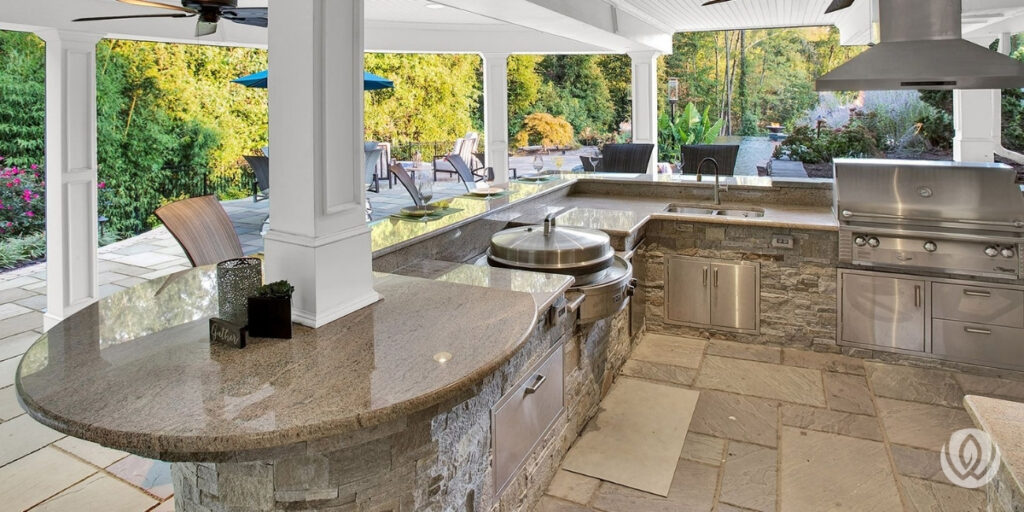
Countertop space is often overlooked but plays a massive role in how smooth your cooking flow feels. Make sure there’s enough room for prepping ingredients, plating food, and setting down tools. If you plan to add a sink or side burner, factor in space for those extras, too. Ideally, you want at least 36 inches of uninterrupted prep surface near your grill.
Tip: Position your prep area next to the grill—not behind or across from it—to keep everything within reach while cooking.
A clutter-free space is a more efficient space. Build in dedicated storage for essentials like grilling tools, seasonings, mitts, cutting boards, and extra fuel—whether that’s charcoal, wood pellets, or propane tanks. Weather-resistant drawers and cabinets can help protect supplies from the elements.
Tip: Include a hidden pull-out trash bin to simplify cleanup without leaving the grill area.
If your grill sits under a pergola or other covering, make sure you have enough clearance for safety and proper ventilation. Built-in grills should always be installed with an overhead vent hood or open airflow to prevent smoke buildup and reduce fire hazards.
Tip: Always consult your grill’s manual for specific clearance requirements—especially if you’re planning to add lighting or ceiling fans nearby.

Think about how people will move around the space. Create clear zones for cooking, prepping, serving, and seating. Keep high-traffic areas—like walkways between the house and yard—clear of hot surfaces and swinging grill lids.
Install task lighting over your grill and prep zones to make evening cooking safer and easier. If you’re using a pellet or electric grill, or want to plug in blenders, phones, or mini-fridges, plan for ample outdoor-rated outlets nearby.
Need more guidance on planning your space? Check out our storage considerations resource or explore inspiration in our outdoor kitchen ideas blog.
Designing your outdoor kitchen starts with a great grill—but it doesn’t end there. From layout planning to choosing weather-resistant materials, every decision adds to the experience.
At LiveWell Outdoors, we help homeowners create outdoor kitchens that align with their space, style, and lifestyle. Whether you're envisioning a simple propane grill setup, a traditional charcoal zone, or a full-featured outdoor BBQ island, we’re here to help bring your vision to life.
Reach out today, and let’s build the outdoor kitchen you’ve always wanted—grill and all.
"*" indicates required fields
